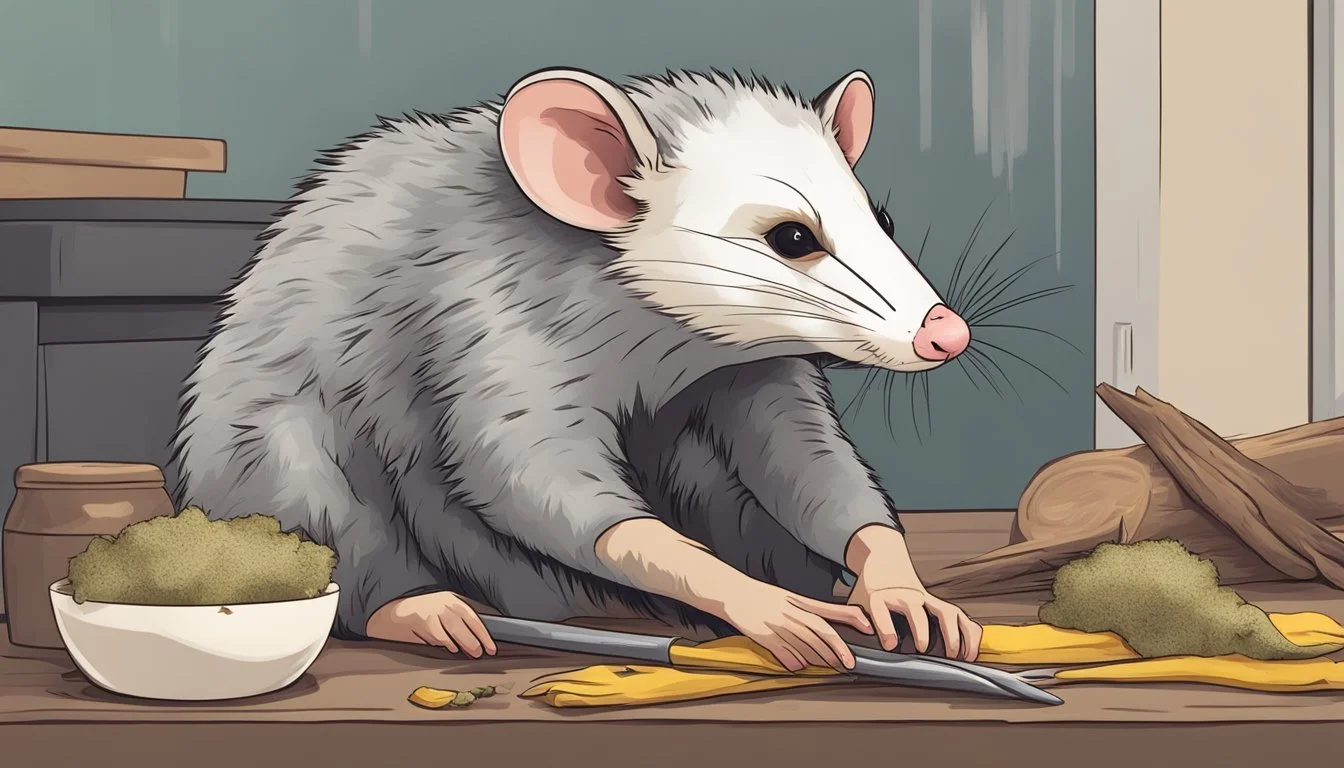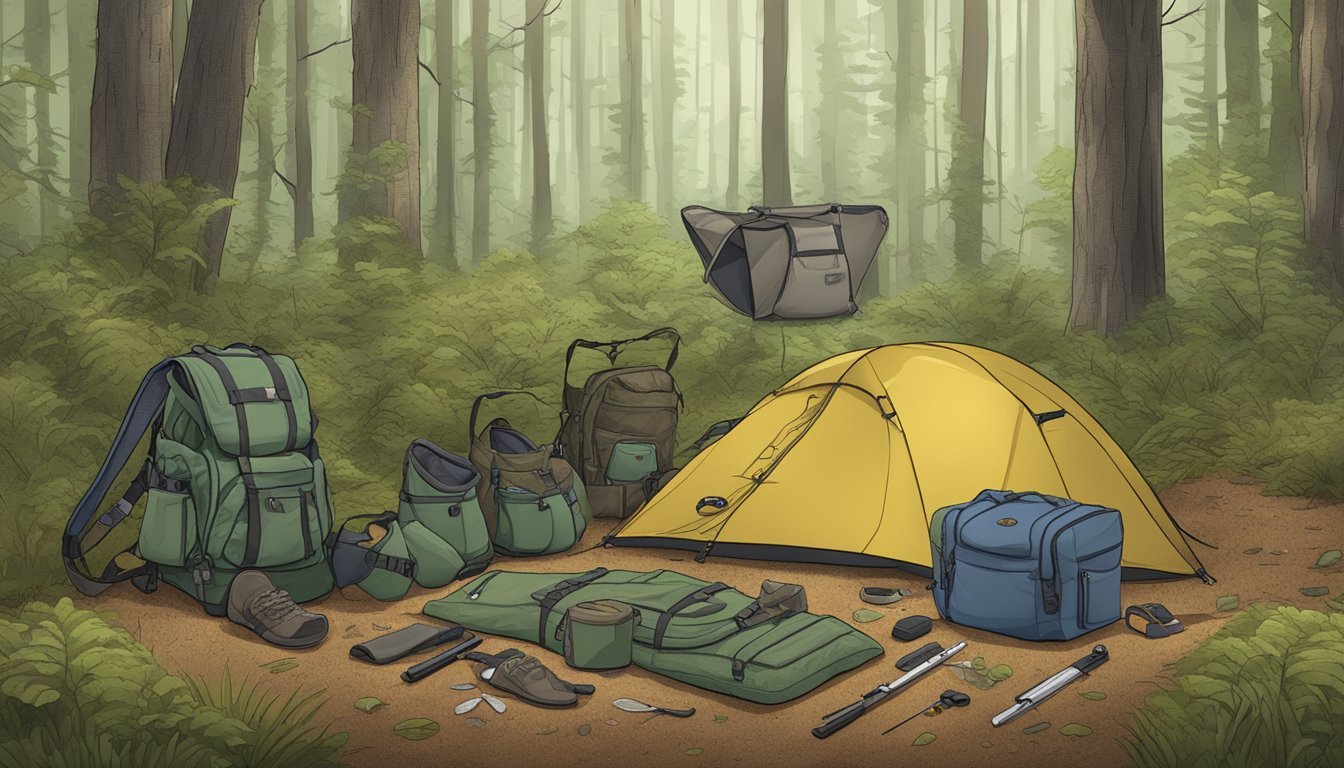Opossum Hunting for Beginners
Essential Tips and Techniques
Opossum hunting has a long tradition in rural areas and provides an opportunity for individuals to engage with the natural environment and hone their wilderness skills. The nocturnal habits of opossums and their unique behavior add a layer of challenge to the hunting experience. As a beginner, it's important to understand the basic requirements for a successful opossum hunt. Essential gear often includes durable clothing, heavy-soled boots to navigate rough terrain, and well-trained dogs to track the opossums. In addition to equipment, hunters utilize a bull's horn to gather and direct their dogs and a burlap sack to carry any captured opossums.
Participating in possum hunting not only offers a chance to develop tracking and observation skills but also contributes to wildlife management and conservation efforts in certain regions. Possession of a valid hunting license is generally mandated, and it's also essential to be aware of the specific hunting seasons, which often run from October to February in most states. Legal compliance ensures that opossum populations are managed sustainably and that hunters can appreciate the sport for generations to come. Meanwhile, mastering the art of possum hunting can enhance a hunter’s knowledge of wildlife behavior and the environment.
Understanding Opossums
Possum hunting requires an appreciation of their unique biology and an understanding of their widespread habitat.
Biology and Behavior
Virginia opossums are the only marsupials found in North America, which places these animals in a unique category as they possess a pouch where their young develop. Males and females signal each other with a clicking sound during the breeding season. As small mammals adult opossums have 50 teeth, more than any other North American mammal, and their diet reflects their omnivorous nature. They are known to be opportunistic feeders, enjoying a variety of foods from fruits to small rodents. Opossums are mostly nocturnal creatures and employ their prehensile tails to aid in climbing trees, though they are not used to hang from trees, contrary to popular myth. Possums make den sites in many places, such as burrows dug by other mammals, rock crevices, hollow stumps, wood piles and spaces under buildings.
Habitat and Distribution
Opossums are highly adaptable and can thrive in a variety of environments, which contributes to their broad distribution. They are typically found in regions stretching from Canada to Central America, encompassing a large portion of the western hemisphere. These marsupials prefer wooded areas near sources of water, although they are often spotted in suburban and urban areas due to their scavenging nature for food scraps in garbage cans. They sometimes choose to live on domestic property under decking, patios, and sheds. Exclusion techniques, such as porcupine wire, prevent climbing, and traps are permitted to stop further invasion. Possums are known to raid the nests of Wild Turkeys, which has led to a fall in the population and a ban on hunting through spring turkey season. There is talk of a year-round season on opossums to stem the decline.
Known Distribution of Virginia Opossums:
Extensive range throughout North America, primarily in the United States.
Northern limits reach into Canada.
Habitat includes forests, farmlands, and urban areas.
Preparation for Opossum Hunting
Before embarking on a possum hunting adventure, it's crucial for hunters to understand the legal requirements, gather the essential equipment, and locate suitable hunting grounds.
Legal Considerations
Every hunter must adhere to the hunting laws of the state they're in. States typically have a defined possum hunting season, often running from October to February. Permits or licenses are mandatory, and one should check if any additional permits are needed for the use of firearms or hunting dogs.
Check the open seasons: Ensure that possum hunting is within the legal season dates.
Acquire a hunting license: A valid hunting license is required in most states.
Equipment Essentials
The gear one chooses can make a significant difference in the success of a hunt.
Firearms: Although not always necessary, a .22 caliber rifle is often used.
Hunting dogs: Skilled at tracking, a pair of trained dogs can improve the chances of locating opossums.
Protection and comfort: Wear overalls and heavy-soled boots for protection against rough terrain and briers.
Burlap sack: For carrying the caught opossums.
Lighting equipment: Essential for nighttime hunting, when opossums are active.
Finding Hunting Grounds
Identifying the right location is key to a successful possum hunt. Seeking areas where opossums are known to be active is advantageous.
Research: Look online or inquire locally about areas known for opossum activity.
Permission: Always secure permission before hunting on private property.
Scout the area: If possible, check the area during the day for signs of opossums.
Hunting Techniques
Possum hunting requires a strategic approach that can involve various techniques including tracking, utilizing hunting dogs, and employing different trapping methods. These techniques can be adapted to the hunter's preference, local legal regulations, and animal behavior.
Tracking and Locating
Successful opossum hunters often start by identifying signs of opossum presence, such as tracks, droppings or disturbed vegetation. It's important to note that opossums are nocturnal, so searching for them is best done during twilight hours or at night. Hunters can utilize a flashlight or headlamp to spot the reflective eyes of opossums in the dark.
Using Dogs for Hunting
Hunting dogs can be highly effective in possum hunting. Dogs with a keen sense of smell, like coonhounds, are trained to track and tree opossums. Once an opossum is treed, the hunter can approach and catch the animal. It is vital to ensure that the dogs are well-trained and able to follow commands promptly when an opossum is found or released.
Trapping Methods
Trapping is a common method for capturing opossums. A basic approach involves using store-bought traps, which should be baited with fruits, vegetables, or meats. Here's a simple list of steps:
Choose a suitable trap - cage varieties are often recommended.
Bait the trap with appealing food, such as cat food for house cats, to attract opossums.
Set the trap in an area with known opossum activity, ensuring it complies with local wildlife laws.
When trapping, it is essential to check the traps regularly and handle the animals with care to avoid stress or injury to the animals. Trapped opossums should be released in a suitable habitat, following local guidelines.
Safety and Ethical Considerations
When hunting opossums, beginners need to understand both how to handle these creatures safely and how to conduct the hunt with a high regard for wildlife.
Handling Opossums
When engaging with live opossums or their habitat, one must consider the potential risks involved. Possums are generally not aggressive, and they are known for their ability of playing dead, or play dead when threatened, hence the expression 'playing possum'. Despite common misconceptions, opossums are not carriers of rabies due to their low body temperature which isn't conducive for the virus. However, they can defend themselves with biting and scratching if cornered.
To handle opossums safely:
Use protective gloves: Prevent scratches and potential infection.
Avoid mother opossums: Mothers can be protective of their young. A female opossum may have a family of up to 20 litters per year.
Respecting Wildlife
Ethical hunting involves more than legal compliance; it's about stewardship of nature and respect for the game pursued. Opossums play a vital role in the ecosystem by controlling insect and rodent populations, and like the more commonly respected raccoon, they deserve ethical treatment.
Key principles include:
Do not overhunt: Take only what you will use to prevent reducing local populations unnecessarily.
Adhere to regulations: Always follow state guidelines for hunting seasons and methods.
Post-Hunt Procedures
After a successful opossum hunt, the next steps are critical for ensuring that the catch is handled safely and efficiently. The hunter must be well-versed in processing the catch, which involves skinning, cleaning, and preparing the meat, followed by cooking it properly to ensure a safe and enjoyable meal.
Processing the Catch
Once the opossum has been humanely dispatched, it is essential to begin by skinning the animal. Hunters should wear gloves to avoid direct contact and use a sharp knife to make incisions around the ankles, carefully peeling the skin from the body. Following that, they must eviscerate the carcass, which involves removing the internal organs, ensuring none of the digestive content comes into contact with the meat.
Here is the basic breakdown of processing steps:
Skin: Remove the pelt from the opossum, starting at the feet and peeling up towards the head.
Clean: Thoroughly rinse the carcass with cold water.
Cut: Break down the carcass into smaller, manageable cuts.
Environmental Impact and Conservation
Possum hunting, as a managed activity, plays a role in ecological balance and upholds conservation principles. The practice can influence population dynamics and habitat health, demanding responsible engagement from hunters.
Population Management
In the South, particularly states like Alabama, the Virginia opossum necessitates careful management to maintain its population levels. Hunting can serve as a tool for population control when it aligns with scientific data and regulations.
Habitat Preservation
Possum hunting must be conducted with habitat preservation in mind. Responsible hunters are essential partners in conservation efforts, contributing to the maintenance of diverse habitats necessary for opossums, the striped skunk and other animals.






